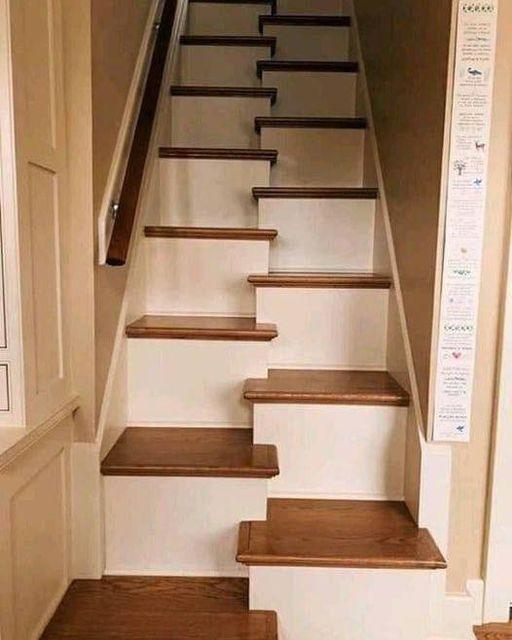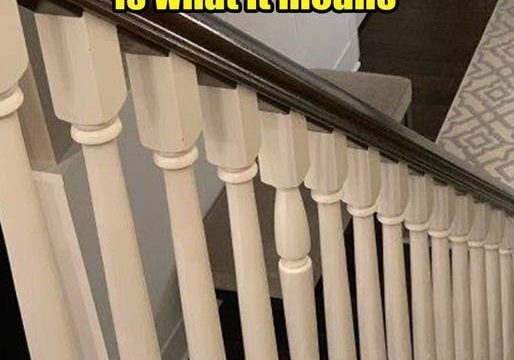A curious home design feature called “witches’ stairs” caught the attention of TikTok users a few years ago. Despite the eerie name, their origins have little to do with witchcraft. Instead, they are a clever architectural solution meant to save space while maintaining functionality. Properly designed and installed, witches’ stairs can be both practical and stylish, making them a unique choice for homes, especially those with limited square footage.

What Are Witches’ Stairs?
At first glance, the name “witches’ stairs” might make you think of superstitions or folklore, but these staircases are actually just a creative way to manage space. Commonly found in attics, lofts, and tiny houses, witches’ stairs—also known as “alternate tread stairs”—are designed to provide access between floors without taking up the room of a traditional staircase. This makes them an ideal option for compact living spaces.
How Witches’ Stairs Function
The design of witches’ stairs is all about maximizing space. Each step is only half the width of a typical step, and the treads are staggered. This alternating pattern allows the staircase to be narrower than traditional ones, making it perfect for small spaces. These stairs can even double as storage, with room for books, decorations, or other items below the steps.
According to Scott Schuttner, author of Basic Stairbuilding, alternate tread stairs offer more free tread area by doubling the distance between treads on each side. This makes them safer than they might initially appear, as the design gives users better footing when ascending or descending. Despite their unconventional look, witches’ stairs meet U.S. building codes and safety standards, with residential versions measuring about 27 to 30 inches wide compared to the standard 3-foot width of regular stairs.
@xokelliscott walking up & down the stairs lol #spacesaverstairs #witchstairs ♬ original sound – kelli♡
Real Origins of Witches’ Stairs
The modern version of witches’ stairs traces back to a patent filed in 1985 by J.M. Lapeyre, who introduced a metal variant. He envisioned them as a safer replacement for ladders in commercial and industrial spaces, such as warehouses and ships. In fact, these stairs are still used in such environments today, often referred to as “ship stairs” or “ship ladders,” demonstrating their versatility and practicality.
But alternate tread stairs have existed in various forms for over a century. A design similar to witches’ stairs was documented in Monckton’s One Plane Method Of Hand Railing and Stair Building, published in 1888, highlighting that these stairs have a history rooted more in practical design than in legend.
Misconceptions About Witches’ Stairs
When TikTok popularized witches’ stairs in 2021, many videos suggested a connection to the 17th-century Salem witch trials. According to the myth, these stairs were designed to prevent witches from entering homes, as it was believed that witches couldn’t ascend the uneven treads. While it’s a captivating story, it has been debunked—there is no historical evidence supporting this theory.
Some even credit Thomas Jefferson with the invention of this design, referring to them as “Jefferson stairs” or “Jeffersonian stairs,” though there is no clear link between Jefferson and these quirky steps. The truth is, witches’ stairs were primarily built for practicality, not for mystical protection.
Debunking the Myths
While the origins of witches’ stairs are not fully clear, one thing is certain: there is no historical evidence suggesting that they were built to ward off witches. Robin Briggs, a historian who has extensively studied witchcraft, confirms that there is no mention of such stairs in historical records. People living in homes with witches’ stairs sometimes added witch bottles or other protective items under thresholds, but this had nothing to do with the stair design itself.
A popular superstition involved placing a broom over the door lintel to trap a witch inside, but there’s no equivalent belief tied to staircases. The notion that witches’ stairs could disable witches is purely fictional.
Why Witches’ Stairs Are Still Popular
Despite the myths, witches’ stairs remain a practical and creative architectural solution for homes, particularly where space is limited. Their alternating tread design not only makes efficient use of space but also adds a touch of quirky charm to a home’s interior. As a functional and visually interesting alternative to traditional staircases, they offer a bit of whimsy while serving a clear purpose.
Conclusion
Witches’ stairs are a fascinating blend of history, design, and folklore. While their eerie name and associated myths make for interesting stories, their true appeal lies in their practicality. Whether you’re dealing with limited space or simply want to add a unique feature to your home, witches’ stairs offer a creative solution that stands out. So, while these stairs may not have any real connection to witchcraft, they certainly bring a touch of magic to compact living spaces.





